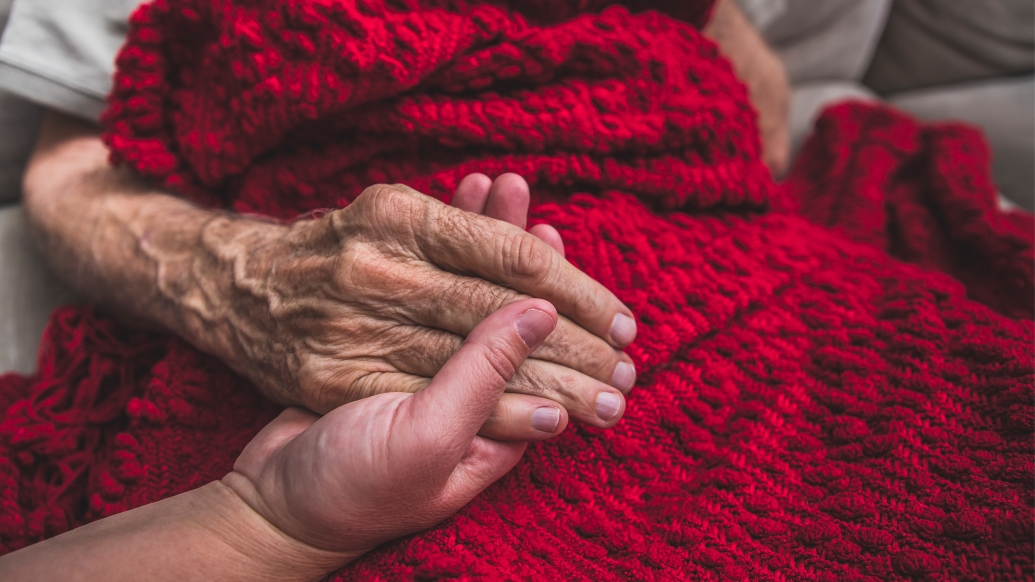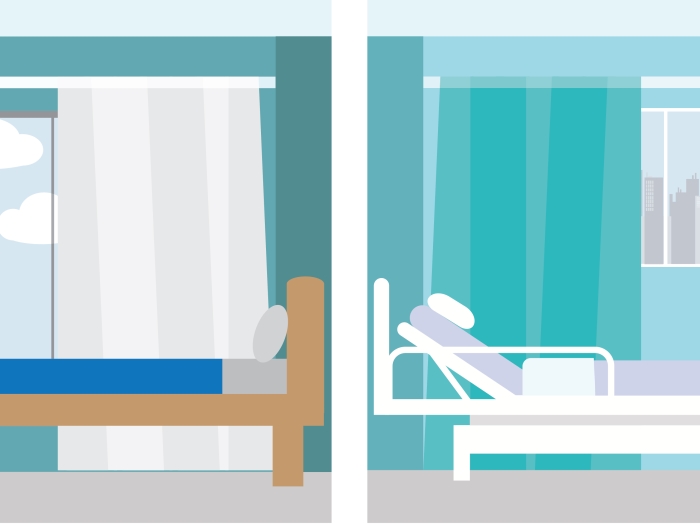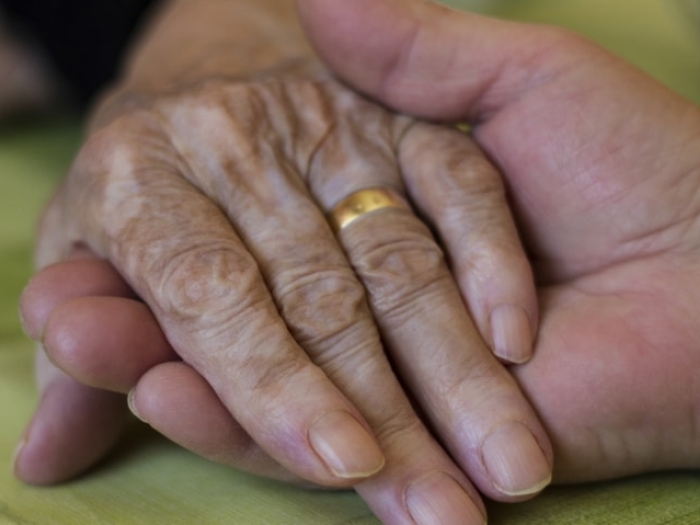Planning ahead, acting early and speaking up for change could help more people with serious illnesses and their families
12:30 PM
Author |

Updated February 19, 2024
As soon as the news broke that former President Jimmy Carter had entered hospice care after many years of treatment for cancer, the salutes to his life of public service began flowing.
But for experts in end-of-life care, his announcement itself counts as one last act of public service.
That’s because they see Carter’s experience as a great prompt for other families to talk about, and take action on, the kind of care they want at the end of life.
A year later, this is still true.
For people with serious health conditions, and even healthy older adults, Carter’s use of hospice means a chance to discuss what they want their last years – and their death – to be like.
It’s also a chance to clear up confusion about hospice and other end-of-life care.
“Hospice is often an incredible resource for patients at the end of life, as well as the best way to support families, through care within their own home or nursing facility – but it does not necessarily mean that someone is actively dying,” said Maria Silveira, M.D., M.P.H., a Michigan Medicine and Veterans Affairs palliative care physician and researcher on many aspects of end-of-life care. “We also find that palliative care is often confused with hospice.”
The way our country pays for hospice care hasn’t changed since Medicare started covering it just after Carter left office in the early 1980s, says her colleague Phillip Rodgers, M.D., the chair of the University of Michigan Department of Family Medicine and palliative care specialist at Michigan Medicine who is active with national organizations advocating for better access to high-quality palliative care, including hospice care.
“People today live with a higher burden of serious illness, with many more treatment options available, than 40 years ago. But they and their families often need help earlier in the course of that illness than current hospice coverage provides,” he said. “There are really important policy discussions under way, aimed at improving hospice access earlier in the course of illness.”
Here’s what Silveira and Rodgers wish more people knew.
Palliative care and hospice aren’t the same thing
When someone has a serious health condition that can’t be cured completely and is life-threatening, palliative care focuses what can be done to make them comfortable and support their quality of life and mental wellbeing.
But at the same time, they can continue to receive treatment for the illness to try to prevent further progression or keep major symptoms at bay. Essentially, palliative care is the wraparound support when dealing with a serious illness – so most large health systems offer it while patients are hospitalized.
Occasionally, health systems and cancer centers have dedicated outpatient palliative care clinics that see patients with serious illness while they are receiving care from other specialists.
Doctors recommend hospice, rather than palliative care, when aggressive treatment is no longer having an effect on their disease, and the patient and family want care that focuses on comfort only.
“Hospice is appropriate when someone with serious illness finds that going back and forth between the hospital, the emergency room and the doctor’s office over and over is too burdensome and no longer useful,” said Silveira.
In hospice care, she explains, the emphasis is on maximizing comfort for the patient and support for the family. Hospice care can be provided at home, in a nursing home or in a hospice residence. Aggressive treatment of the patient’s underlying condition stops, but that doesn’t mean all care stops.
Entering hospice care doesn’t mean death will come within days or even weeks
On average, people with Medicare coverage who entered hospice care in recent years lived about three weeks after making the transition. But Medicare covers hospice care for longer periods – patients who are considered at high risk of dying in the next six months might be eligible.
Rodgers notes that Medicare’s current hospice benefit requires two doctors to certify the six-month prognosis. People with Medicare Advantage plans currently must get their hospice coverage through regular Medicare.
“The problem is, as a profession we really struggle to predict how long people are going to live in terms of months, but it’s easier to do when it comes to days or weeks,” he said. “Meanwhile, people with dementia have caregiving needs for years before they might have a six-month prognosis, so they’re badly served by the Medicare hospice benefit as it’s written today.”
Silveira notes that qualifying for hospice can be difficult for patients with dementia or those who have multiple chronic illnesses and frailty. These patients typically need to be nearing death in order to receive hospice, but their families may become overwhelmed with the day-to-day responsibilities of caregiving long before their loved one qualifies for hospice.
Hospice at home doesn’t mean 24/7 care by paid staff
Getting hospice care at home means a lot of things, including specialized providers who can be called around the clock for advice. But there’s a lot of confusion about how much hands-on care it actually includes, Silveira says.
“Hospice agencies can arrange for pain medications, hospital beds, oxygen tanks, and other supplies to be brought to the home, which can be a wonderful benefit especially given the difficulties people now encounter in getting some of these medications from their local pharmacy in a timely way,” she said. “Hospice can also provide some respite care and bath assistance. Even still, caring for a seriously ill loved one at home represents a giant responsibility for the family.”
The nurse practitioners associated with hospice agencies can prescribe and manage medications, and the agency can send respite caregiving staff who can help with repositioning the person or bathing them. Those staff can also give family caregivers a chance to run to the store for groceries or tend to their own health or work needs.
Even with this help, experts recommend there be two people in the home at all times with a patient who is bed-bound. That can be spouses, grown children, close friends, neighbors, members of the person’s faith community, or additional paid helpers. Silveira notes that it can take two people to get the person to the bathroom or portable commode, to move them in bed so they don’t develop painful bedsores, to feed them or change sheets, clothes and adult diapers, and more.
Most people don’t have the means to pay for additional home health aides around the clock, which can cost $30 an hour or more through an agency. Even if they have the means, or long-term care insurance that can be used for home health aides, families may be frustrated looking for agencies that have the capacity to provide support due to workforce shortages.
So building a team of unpaid helpers, to support the main family caregiver and the person in hospice, is critical. That means both physical support and emotional support for the person who is dying, and for their closest loved ones.
If you know that someone has entered hospice at home, or you think they may soon, now’s the time to reach out and offer specific help -- even if it’s just sitting by the bedside for a few hours while the person’s primary caregiver sleeps or runs errands.
Hospice outside the home may require spending savings or applying for Medicaid
While surveys show that most Americans want to die at home, a sizable percentage do not. And for some who are already living in nursing homes, or getting care in a hospital, going home may not be possible.
That’s why hospice agencies also offer their services within some nursing homes and hospice-run assisted living facilities. But these often require either payment out of the patient’s or family’s own savings or income, or from long-term care insurance if they have it. For those with lower incomes or amounts of savings, it’s possible to apply for Medicaid coverage for hospice care in a Medicaid-certified long term care facility.
Rodgers notes that many families may be surprised to learn their loved one could qualify for Medicaid coverage of hospice – but that it’s often hard to think about proving financial eligibility for this program at a time when a loved one is nearing death. Asking to speak to a social worker at the hospital or clinic is often a good way to get started.
Changes in the palliative care and hospice industry mean today’s experience differs from past ones
Silveira notes that the rapid rise in telehealth appointments during the pandemic has been an incredible boon for palliative care providers. Now, after establishing a connection with a patient in person, palliative care providers can do many things via a video chat or even a phone chat so that the seriously ill patient doesn’t need to travel to the clinic.
As a ProPublica/New Yorker investigative news article found, the past decade has seen a rise in for-profit companies acquiring local hospice agencies or starting new ones.
This means that hospice staffing models of the past – where a specific nurse or aide might be assigned to a few patients and care for them until they die – have changed. Now, a hospice patient might have many different hospice staff coming to their home over the course of their care. New faces nearly every day, or every shift, can mean less continuity in care.
Even if a hospice patient or caregiver develops a connection with a particular team member, the patient may not be able to request that person be assigned to them, depending on the hospice agency, Silveira notes.
With all the changes in the hospice industry, experts recommend families “shop around” for the right hospice agency. The Medicare system now has a tool that lets anyone compare the quality of different hospice agencies in their area. But it doesn’t include patient ratings, so it’s important to ask around and look at other ratings online when trying to decide which hospice agency to choose.
Get key documents and financial advice in order well before you need them
One key thing everyone should have in place – even if they don’t have a serious illness and even if they’re married – is signed paperwork that specifies who they authorize to make medical decisions for them if they can no longer do so.
Michigan Medicine offers a free tool that does not require a lawyer or notary, and walks a person through the steps of choosing and formally designating this Patient Advocate, and having that choice witnessed so it is legally binding as a Durable Power of Attorney for Healthcare.
It’s critical to have this in place before an illness robs someone of their ability to make decisions, because admission to nursing homes for hospice care can hang on whether it’s been documented that someone had the patient’s permission to make that decision on their behalf.
Another key thing to do now, even if you don’t have a major health condition, is to look at options for getting long-term care insurance through your employer or an insurance agent. These plans can offer funds to help pay for nursing home care, hospice residence or home health aides when other coverage isn’t available.
If you’re a person who might need to provide home-based care for a loved one in hospice, now is the time to find out how to use any paid time off, paid leaves or unpaid time off protected by the Family and Medical Leave Act.
If the person who might need hospice care has assets that could keep them from qualifying for Medicaid benefits, or substantial assets, it may be a good idea to talk with a financial planner or attorney about possible options.
A Durable Power of Attorney for financial decisions, and designating a loved one to be a joint holder of checking and savings accounts, joint owner of property, or designated beneficiaries of retirement accounts, is important. Without it, there can be delays in paying bills and for expenses once the patient loses the ability to do it themselves.
Policymakers need to hear from patients and families about their hospice and other end-of-life care experiences
Rodgers, who works with the advocacy arm of the American Academy of Hospice and Palliative Care Medicine to talk with elected officials and federal agencies about palliative and end-of- life care, says key changes may be on the horizon. But how fast they happen may depend on the voices of those who have experienced the current system as patients or caregivers.
For instance, the requirement that admission to hospice be based on life expectancy and not the person’s condition and needs is something that could change. So could the requirement that all treatment and hospitalization for the underlying condition be stopped – for instance, removing fluid that has built up in people with congestive heart failure, which can greatly improve someone’s quality of life.
“There has been real interest among some in Congress and in the Centers for Medicare and Medicaid Services to reimagine the hospice benefit and modernize it to be based on need not a six-month prognosis, and to improve quality while reducing waste, fraud and abuse,” he said.
If such changes had been made earlier, he says, someone with President Carter’s medical history but fewer financial resources could potentially have gotten hospice care covered earlier in the course of their illness, while still getting cancer treatment.
“As the benefit is structured today, there are important inequities based on income, availability of family members to step out of the workforce and become home caregivers, and other factors such as whether someone’s cultural or spiritual background means they prefer not to die at home,” said Rodgers. “Hospice is a $20 billion part of our health care system that needs to be modernized to improve access and accountability. Policymakers do pay attention to what they’re hearing from their constituents.”

Explore a variety of health care news & stories by visiting the Health Lab home page for more articles.

Department of Communication at Michigan Medicine

Want top health & research news weekly? Sign up for Health Lab’s newsletters today!





